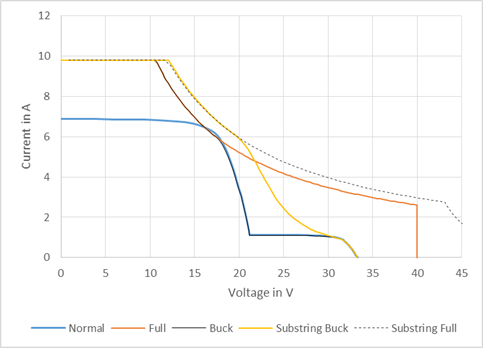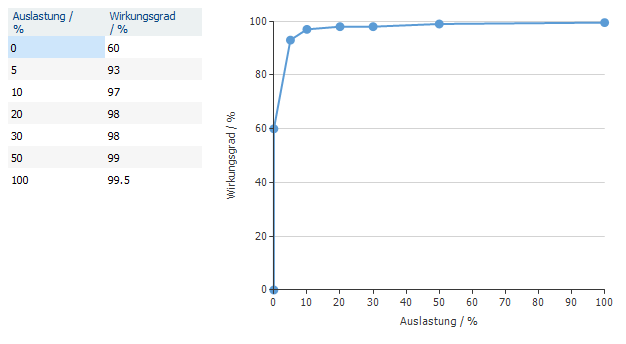Power optimizer
Power optimizers are small electronic components that monitor the current-voltage characteristic of a PV module, individual strings within a PV module or entire series connections of several PV modules. They search within their electrical limits like an MPP tracker for the point of maximum power (MPP, maximum power point) and output this optimum operating point to the outside in the form of a hyperbolic characteristic curve of equal power.
Types of power optimizers
There are different types of power optimizers. They differ in the type of characteristic modification and in the type of installation.
Characteristics modification
Full
Here the characteristic curve at module level is stretched hyperbolically over the entire range between $U_{\text{max}}$ and $I_{\text{max}}$.
Most Popular Representative: SolarEdge
Buck
Here the characteristic at module level is only spanned between $U_{\text{MPP}}$ and $I_{\text{max}}$ hyperbolically. Between $U_{\text{MPP}}$ and $U_{\text{OC}}$ the characteristic runs conventionally, or only minimally modified.
Most Popular Representative: Tigo
Substring Buck
Like in buck mode, but here several performance optimizers operate on the substring level. This means, for example, that they can replace the diodes in the junction box and thus optimize each sub-strand of a PV module separately. As a rule, this is where the optimization effect is greatest.
Most Popular Representative: Maxim Integrated
Substring Full
Here, several performance optimizers operate from the substring level, but in full mode. There are currently no substring full performance optimizers in practice.
Installation types
- in the junction box of the PV module
- external, as a separate device
Efficiency
Of course, power optimizers also have an efficiency, as they are a form of DC/DC converter similar to MPP trackers or boost converters. The efficiency depends on the utilization of the power optimizer.
The efficiency characteristic is indicated, as is usual in PV*SOL®, with some reference points:
Overall mismatch
The total mismatch $ P_\text{Mismatch,ges} $ is calculated from the maximum current mismatch $ I_\text{Mismatch,max} $ and the maximum stress mismatch $ U_\text{Mismatch,max} $.
$$ P_\text{Mismatch,ges} = I_\text{Mismatch,max} \cdot U_\text{Mismatch,max} $$ $$ I_\text{Mismatch,max} = 1 - \frac{I_\text{min}}{I_\text{max}} $$ $$ U_\text{Mismatch,max} = 1 - \frac{U_\text{min}}{U_\text{max}} $$
See also


